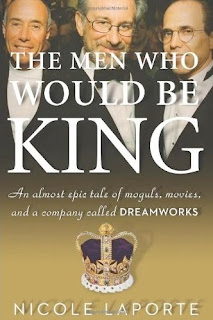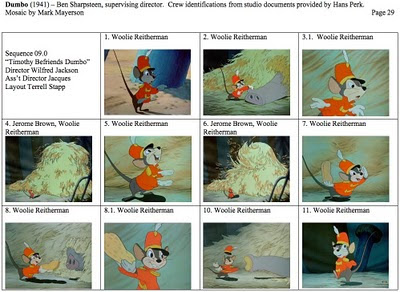This really is Woolie Reitherman's section. He animates practically everything. Ed Brophy, the voice of Timothy, gives an excellent reading, alternating between coaxing, thinking out loud, cheerleading and puzzlement. Reitherman catches all those emotions in his animation. Between Brophy and Reitherman, we get a good understanding of Timothy, a character who is warm-hearted, considerate and intelligent. Reitherman's posing is broad and has a strong line of action, though he's fairly conservative when it comes to changing the character's shapes. As I mentioned in the last section, Reitherman's Timothy is more structural than Fred Moore's. The sound effects in shot 10, when Dumbo vacuums the peanut away from Timothy and spits out the shells, is very funny. The pan in shot 24.1 is on twos, another indication of the corner cutting in this low budget film. Generally, pan backgrounds are shot on ones, as twos work less well for moving backgrounds than for charac







